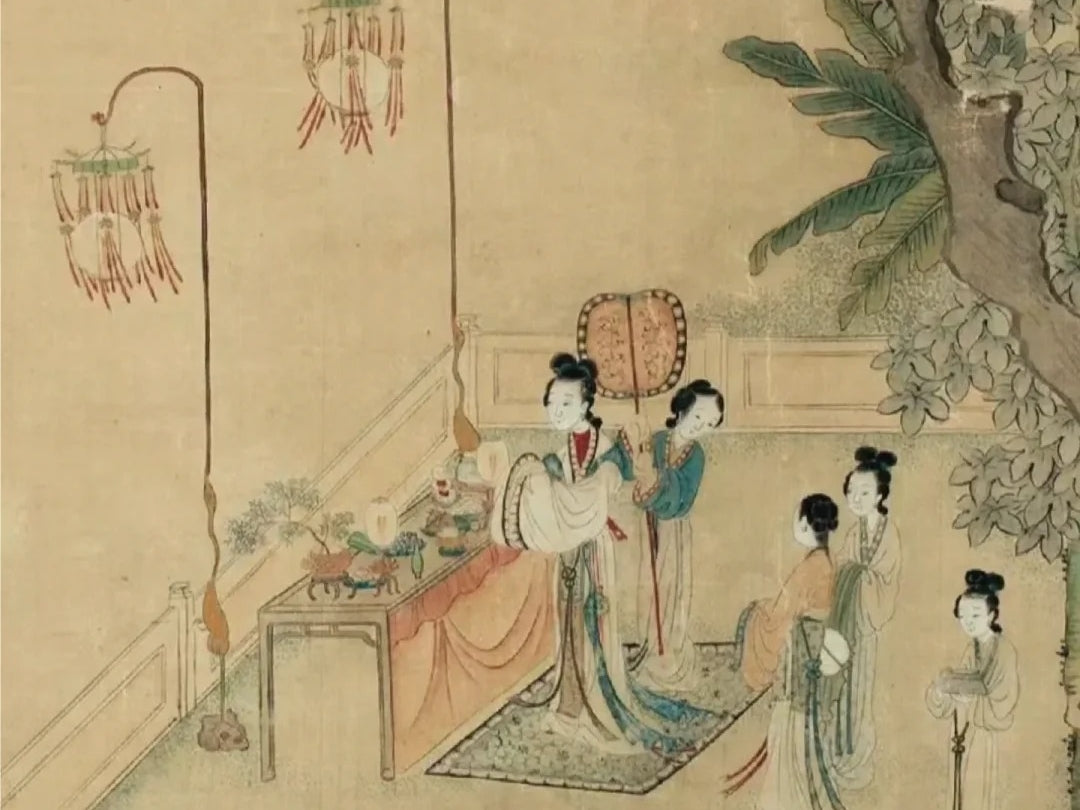Delve into the history, cultural importance, and evolution of incense burners
Incense burners, known as 香炉 (xiāng lú) in Chinese, hold a rich and diverse history that reflects the evolution of human culture and spirituality. From their origins in ancient rituals to their place in modern homes, incense burners have transcended their utilitarian purpose, becoming symbols of cultural heritage, religious practice, and aesthetic beauty.
The Origins of Incense Burners: Spring and Autumn Period (770-476 BCE)
The history of incense burners dates back to the Spring and Autumn Period (春秋时期, 770-476 BCE) in China. During this time, the state of Chu, known for its humid climate, saw the emergence of incense burning as a practical means to combat dampness and mold in indoor spaces. The earliest incense burners were simple tools used for burning aromatic materials to purify the air and create a pleasant environment.
The term "炉" (lú), meaning "stove" or "furnace," first appeared in the ancient text "Zhou Li" (周礼), a classic work on rituals and governance from the Western Zhou Dynasty (1046-771 BCE). It mentioned the use of stoves for burning incense in the royal palace, marking the beginning of the incense burner as a significant cultural artifact.
The Han Dynasty (206 BCE - 220 CE): The Emergence of the Boshanlu
The Han Dynasty (汉朝, 206 BCE - 220 CE) marked a turning point in the development of incense burners. The most iconic incense burner from this period is the Boshan Burner (博山炉), characterized by its intricate design resembling a miniature mountain. The Boshan burner’s lid was often crafted to depict mountains, mythical creatures, and clouds, symbolizing the connection between the earthly and the divine.

These incense burners were more than just tools, they were artistic representations of the Han people’s cosmological beliefs. As recorded in the "Kao Gu Tu" (考古图), the Boshan burner’s design was intended to evoke the image of an eternal mountain surrounded by swirling clouds, symbolizing the perpetual connection between the human and spiritual realms. The use of precious materials like gold and silver further emphasized their importance in religious and ceremonial practices.
The Influence of Buddhism: Tang Dynasty (618-907 CE)
With the spread of Buddhism in China during the Tang Dynasty (唐朝, 618-907 CE), incense burners took on new cultural and religious significance. The integration of Buddhist symbols such as the lotus, flames, and auspicious clouds into incense burner designs reflected the growing influence of Buddhism on Chinese society.
Metal incense burners, particularly those made of silver or silver-gilt, became popular during this period. These burners were not only used in temples and monasteries but also in the homes of the literati and the elite, who sought to incorporate Buddhist practices into their daily lives. The act of burning incense became a meditative practice, symbolizing the purification of the mind and the connection between the temporal and the eternal.


The Song Dynasty (960-1279 CE): The Rise of Scholarly Aesthetics
During the Song Dynasty (宋朝, 960-1279 CE), incense burners evolved to reflect the refined tastes of the scholarly class. The design of incense burners became more understated and elegant, aligning with the literati’s preference for simplicity and subtlety. Incense burning became a part of daily life for scholars, who used it to create a tranquil atmosphere for activities such as writing poetry, playing musical instruments, and contemplating nature.
One of the most distinctive features of Song Dynasty incense burners was their incorporation of animal motifs, which were believed to embody vitality and a connection to nature. The Longquan celadon incense burners, with their jade-like glaze, became highly prized for their serene beauty and association with the spiritual and intellectual pursuits of the literati.


The Ming Dynasty (1368-1644 CE): The Zenith of Incense Burner Craftsmanship
The Ming Dynasty (明朝, 1368-1644 CE) represents the peak of incense burner craftsmanship. The Xuande incense burners (宣德炉), named after the Xuande Emperor, are considered masterpieces of Chinese metalwork. These burners were renowned for their elegant shapes, rich patinas, and exquisite craftsmanship, making them highly sought-after by collectors and connoisseurs.
The Xuande incense burners were not only functional objects but also works of art that embodied the aesthetic ideals of the Ming period. Their designs often incorporated elements of Taoist and Confucian symbolism, reflecting the harmonious integration of different philosophical traditions in Ming society.


The Transition to Modern Times: Incense Burners in Contemporary Homes
In modern times, incense burners have found their way into homes around the world, transcending cultural boundaries. While they are still used in religious rituals and traditional ceremonies, incense burners have also become popular as decorative items and tools for creating a calming atmosphere in living spaces.
Contemporary incense burners come in a wide variety of designs and materials, from traditional ceramics and metals to modern glass and stone. The use of incense has expanded beyond religious and spiritual practices, becoming a popular means of relaxation and mindfulness in today’s fast-paced world.


A Legacy of Culture and Spirituality
The journey of incense burners from ancient rituals to modern homes reflects the enduring significance of these objects in human culture. As symbols of spirituality, artistic expression, and cultural heritage, incense burners continue to connect us to our past while enriching our present lives. Whether used in religious ceremonies, as decorative items, or as tools for relaxation, incense burners embody a legacy of beauty, tradition, and meaning that transcends time and place.
As we burn incense today, we participate in a practice that has been refined and cherished for millennia, a practice that brings us closer to the divine, to nature, and to each other.



